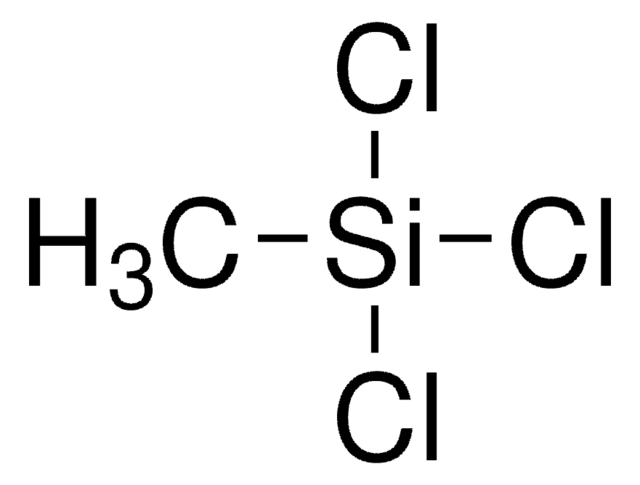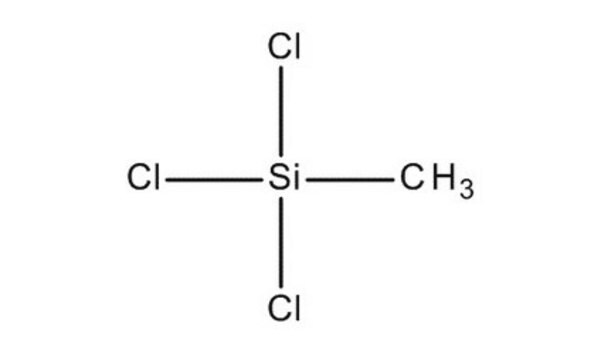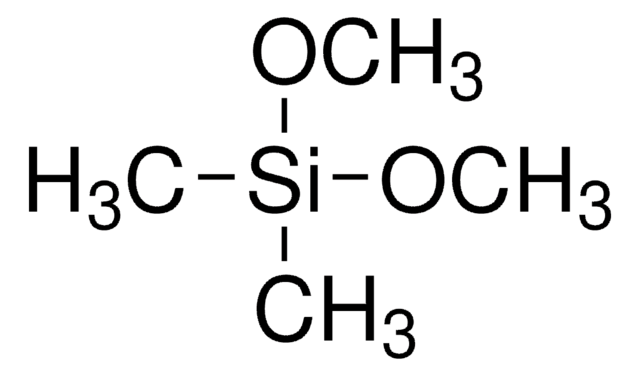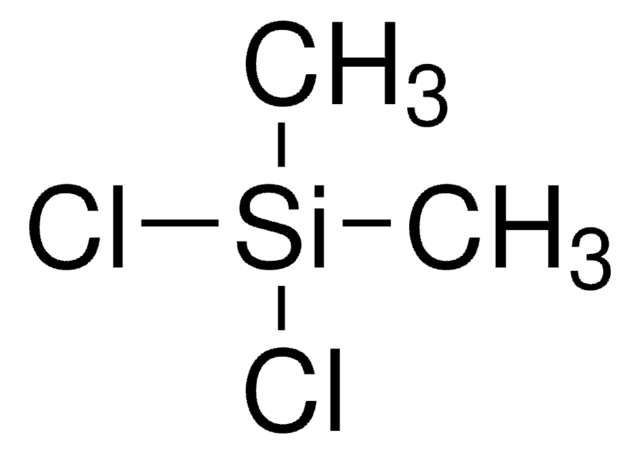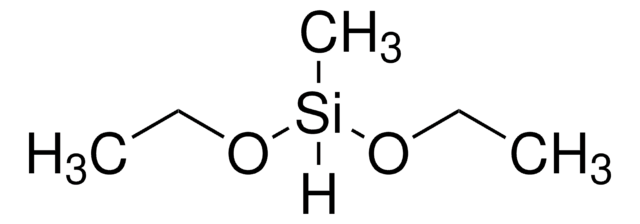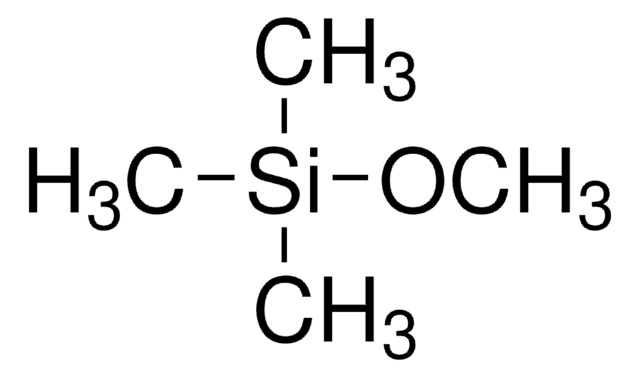Wichtige Dokumente
679208
Trichlormethylsilan
deposition grade, ≥98% (GC), ≥99.99% (as metals)
Synonym(e):
Methyltrichlorsilan
About This Item
Empfohlene Produkte
Qualität
deposition grade
Dampfdichte
5.2 (vs air)
Dampfdruck
150 mmHg ( 25 °C)
Assay
≥98% (GC)
≥99.99% (as metals)
Form
liquid
Selbstzündungstemp.
>760 °F
Expl.-Gr.
11.9 %
Brechungsindex
n20/D 1.411 (lit.)
bp
66 °C (lit.)
Dichte
1.273 g/mL at 25 °C (lit.)
SMILES String
C[Si](Cl)(Cl)Cl
InChI
1S/CH3Cl3Si/c1-5(2,3)4/h1H3
InChIKey
JLUFWMXJHAVVNN-UHFFFAOYSA-N
Suchen Sie nach ähnlichen Produkten? Aufrufen Leitfaden zum Produktvergleich
Signalwort
Danger
Gefahreneinstufungen
Acute Tox. 3 Inhalation - Acute Tox. 4 Dermal - Acute Tox. 4 Oral - Eye Dam. 1 - Flam. Liq. 2 - Skin Corr. 1A - STOT SE 3
Zielorgane
Respiratory system
Lagerklassenschlüssel
3 - Flammable liquids
WGK
WGK 1
Flammpunkt (°F)
46.4 °F - closed cup
Flammpunkt (°C)
8 °C - closed cup
Hier finden Sie alle aktuellen Versionen:
Besitzen Sie dieses Produkt bereits?
In der Dokumentenbibliothek finden Sie die Dokumentation zu den Produkten, die Sie kürzlich erworben haben.
Artikel
atomic layer deposition (ALD), microelectronics, Mo:Al2O3 films, nanocomposite coating, photovoltaics, semiconductor devices, W:Al2O3 films, composite films, layer-by-layer
Silica is a very popular inorganic nanomaterial used in a wide range of applications including fillers for rubber, catalyst supports, separation media, carriers in food and agriculture, and abrasive/anticaking agents in cosmetics. It is also widely believed to be an important material for biomedical applications for following reasons.
Synthesis of Melting Gels Using Mono-Substituted and Di-Substituted Alkoxysiloxanes
Unser Team von Wissenschaftlern verfügt über Erfahrung in allen Forschungsbereichen einschließlich Life Science, Materialwissenschaften, chemischer Synthese, Chromatographie, Analytik und vielen mehr..
Setzen Sie sich mit dem technischen Dienst in Verbindung.